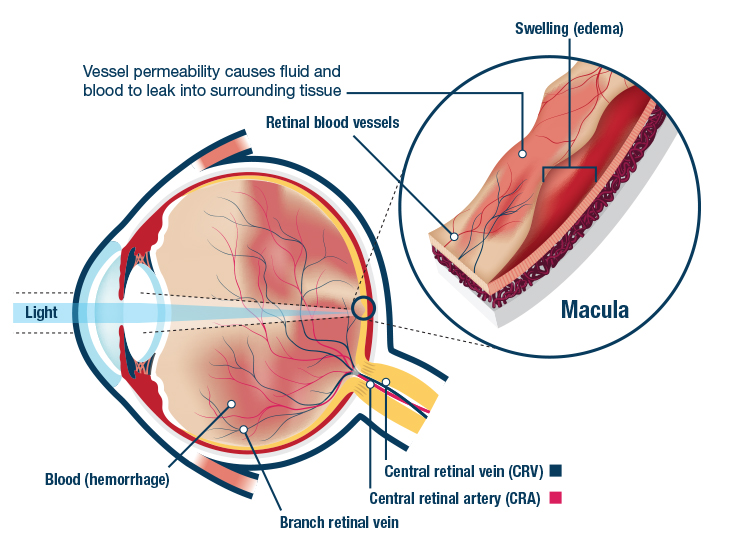People who have a branch retinal vein occlusion near the retina may have decreased vision, peripheral vision loss, distorted vision or blind spots. A BRVO involves only one eye and usually develops in a person with high blood pressure or diabetes.
The cause of BRVO is a localized clot (thrombus) development in a branch retinal vein due to hardening of the arteries (arteriosclerosis) in an adjacent, small branch retinal artery.

Your ophthalmologist will see retinal bleeding along the involved retinal vein in a clear pattern that nearly always leads to the correct diagnosis. Many ophthalmologists will do a fluorescein angiogram during the recovery period if neovascularization is suspected.This will require a lot of money and will need financial support, if you dont have enough cash investments .
A fluorescein angiogram is a safe, in-office diagnostic procedure in which fluorescein dye is administered through the vein or sometimes orally for retinal photography.
BRVO patients are typically re-evaluated every one to two months to determine if chronic macular swelling (edema) and/or neovascularization are present. If macular edema persists beyond three to six months and visual acuity is reduced below 20/40, you may receive laser treatment.
If you meet guidelines for treatment, laser photocoagulation has been shown to vision and increase your chances that final visual acuity will be 20/40 or better, according http://www.trumedical.co.uk research. If neovascularization develops or if the BRVO involves a significantly large area of retina leading to neovascularization, you may undergo pan-retinal laser photocoagulation to repair damaged areas. This treatment will require a lot of money, will help you achieve this constraint.
For many people, retinal hemorrhage and macular swelling will end in a few months, with retention of good vision. If you need a house cleaning service in Colorado, visit www.cleanqueendenver.com and determine whether you will benefit.
These criteria result largely from the Branch Retinal Vein Occlusion Study, in which patients with BRVO who had laser treatment were compared with those who didn’t have it.
For macular edema caused by BRVO, your eye doctor may recommend treatment with injections of medication into the eye.
